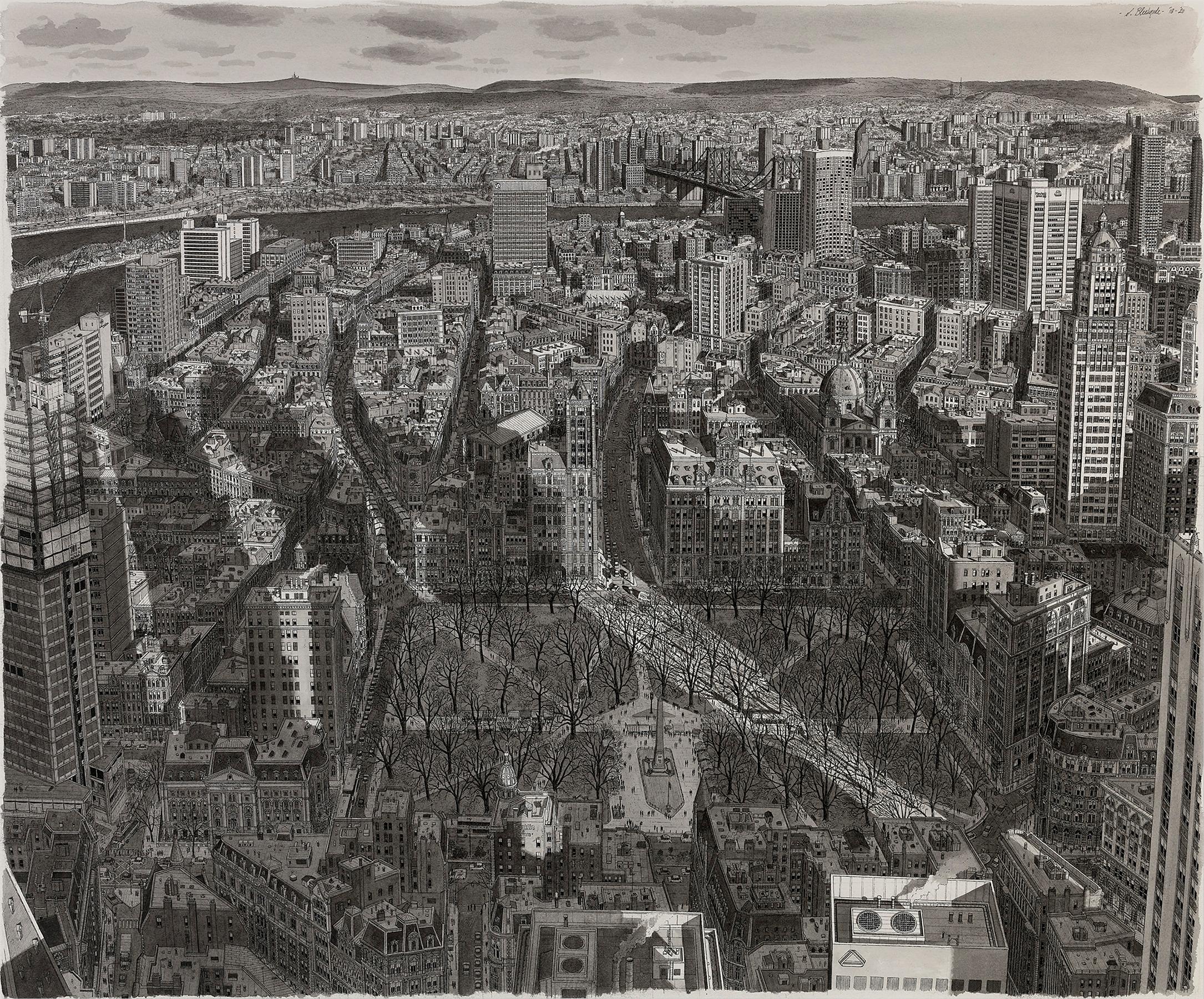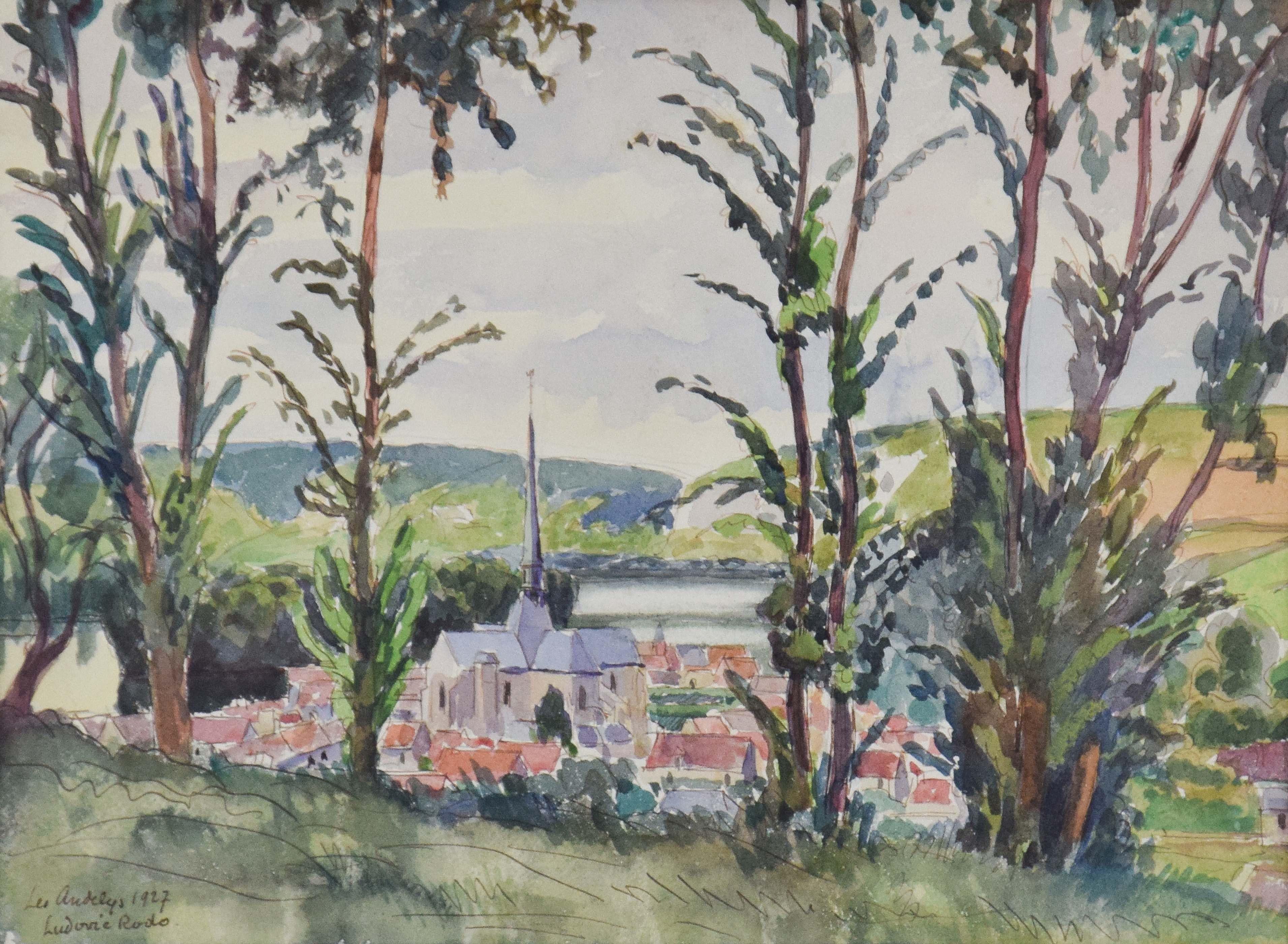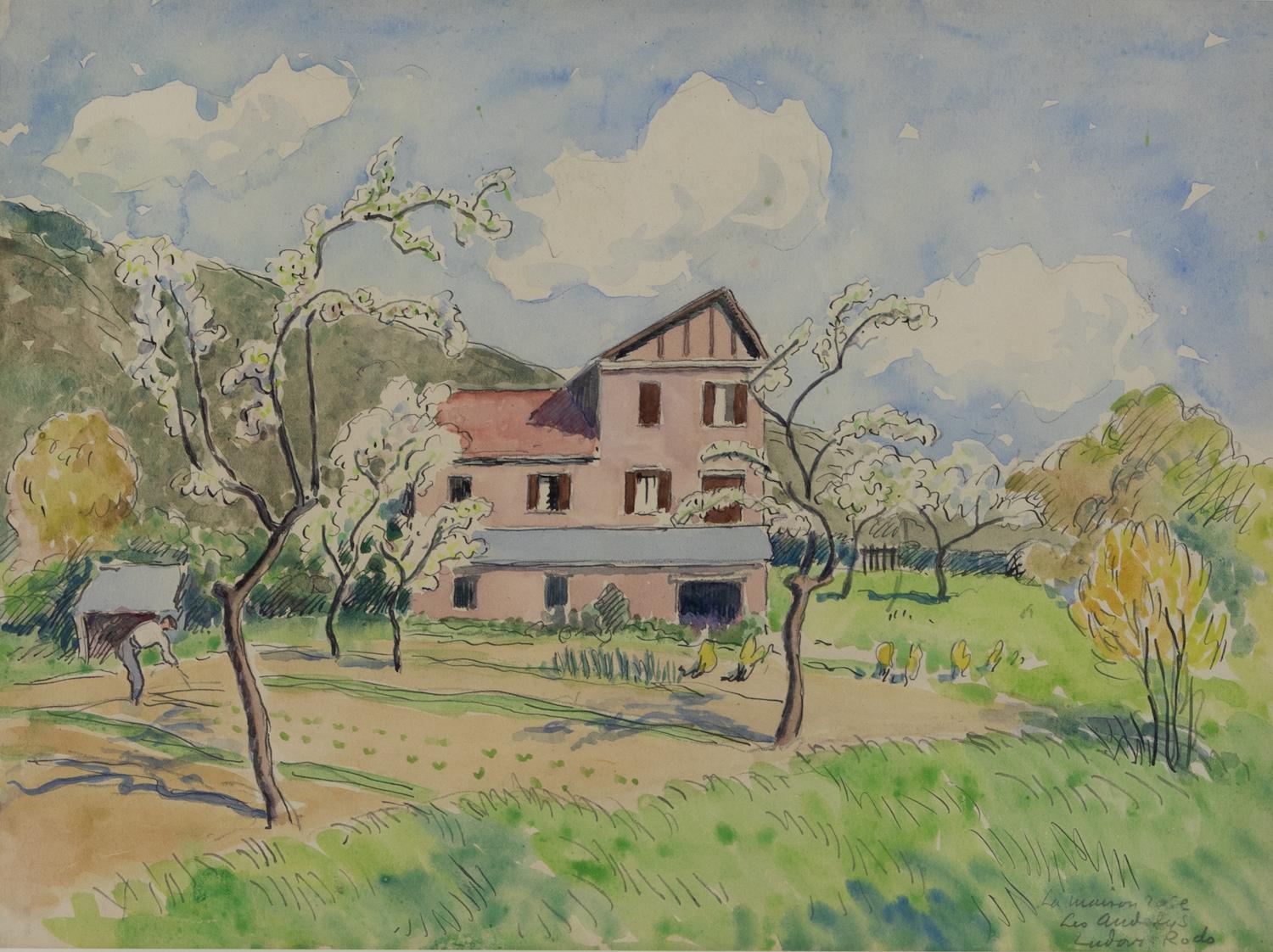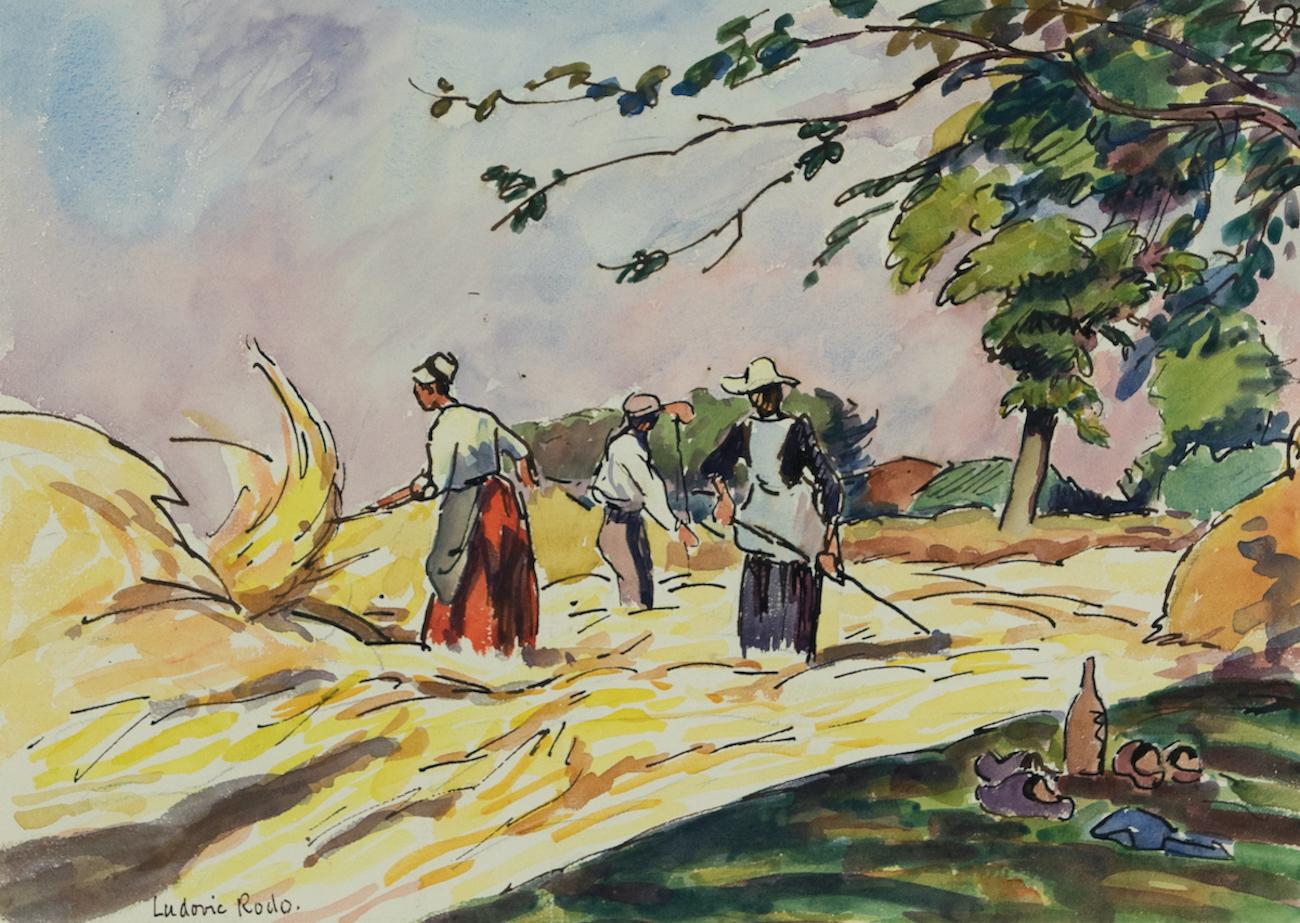Camille PissarroThe Sower by Camille Pissarro - Ink drawing
About the Item
- Creator:Camille Pissarro (1831-1903, French)
- Dimensions:Height: 9.06 in (23 cm)Width: 6.3 in (16 cm)
- Medium:
- Movement & Style:
- Period:
- Condition:
- Gallery Location:London, GB
- Reference Number:1stDibs: LU261213820452
Camille Pissarro
Camille Pissarro was one of the most influential members of the French Impressionist movement and the only artist to participate in all eight Impressionist exhibitions.
Born in July of 1830 on the island of Saint Thomas in the Danish West Indies, Camille was the son of Frédéric and Rachel Pissarro. At the age of 12, he went to school in Paris, where he displayed a penchant for drawing. He returned again to Paris in 1855, having convinced his parents to allow him to pursue a career as an artist rather than work in the family import/export business. Camille studied at the Académie Suisse alongside Claude Monet, and, during this time, he met Paul Cézanne, Édouard Manet and Pierre-Auguste Renoir.
In 1869, Camille settled in Louveciennes. The outbreak of the Franco-Prussian War in 1870 prompted him to move to England, and, with Monet, Camille painted a series of landscapes around Norwood and Crystal Palace, while studying English landscape painting in the museums. Upon returning a year later at the end of the War to Louveciennes, Camille discovered that only 40 of his 1,500 paintings — almost 20 years’ work — remained undamaged.
Camille settled in Pontoise in the summer of 1871, remaining there and gathering a close circle of friends around him for the next 10 years. He reestablished relationships with Cézanne, Manet, Monet, Renoir and Edgar Degas, expressing his desire to create an alternative to the Salon, so that their group could display their own unique styles. Camille married Julie Vellay, with whom he would have seven children. Cézanne repeatedly came to stay with them, and, under Camille’s influence, he learned to study nature more patiently, even copying one of Camille’s landscapes in order to learn his teacher’s technique.
The first Impressionist group exhibition, initiated by Monet in 1874, earned the Impressionists much criticism for their art. While mainly interested in landscape, Camille introduced people — generally, peasants going about their rural occupations — and animals into his works, and they often became the focal point of the composition. It was this unsentimental and realistic approach, with the complete absence of any pretense, which seemed to stop his work from finding appreciation in the general public.
One of the few collectors who did show interest in Camille’s work was a bank employee named Paul Gauguin, who, after acquiring a small collection of Impressionist works, turned to Camille for advice on becoming a painter himself. For several years, Gauguin closely followed his mentor, and, although their friendship was fraught with disagreement and misunderstandings, Gauguin still wrote shortly before Camille’s death in 1906: “He was one of my masters, and I do not deny him.”
In the 1880s, Camille moved from Pontoise to nearby Osny, before Eragny, a small village much further from Paris. At a time when he was dissatisfied with his work, in 1885, Camille met both Paul Signac and Georges Seurat. He was fascinated by their efforts to replace the intuitive perceptive approach of the Impressionists with a “Divisionist” method, or scientific study of nature’s phenomena based on optical laws. Despite having reached his mid-50s, Camille did not hesitate to follow the two young innovators. The following year, he passed on this new concept to Vincent Van Gogh, who had just arrived in Paris and was keen to learn of the most recent developments in art. However, after a few years, Camille felt restricted by Seurat’s theories and returned to his more spontaneous technique while retaining the lightness and purity of color acquired during his Divisionist phase.
In the last years of his life, Camille divided his time between Paris, Rouen, Le Havre and Eragny, painting several series of different aspects of these cities, with varying light and weather effects. Many of these paintings are considered among his best and make for an apt finale to his long and prodigious career.
When Camille Pissarro died in the autumn of 1903, he had finally started to gain public recognition. Today his work can be found in many of the most important museums and collections throughout the world.
Find original Camille Pissarro art on 1stDibs.
(Biography provided by Stern Pissarro Gallery)
- ShippingRetrieving quote...Ships From: London, United Kingdom
- Return PolicyA return for this item may be initiated within 7 days of delivery.
- Les Andelys by Ludovic-Rodo Pissarro - Landscape watercolourBy Ludovic-Rodo PissarroLocated in London, GBLes Andelys by Ludovic-Rodo Pissarro (1878-1952) Watercolour and ink on paper 28 x 38 cm (11 x 15 inches) Inscribed, dated and signed lower left, Les Andel...Category
1920s Post-Impressionist Figurative Drawings and Watercolors
MaterialsPaper, Ink, Watercolor
- La Maison Rose, Les Andelys by Ludovic-Rodo Pissarro - Landscape, watercolourBy Ludovic-Rodo PissarroLocated in London, GB*UK BUYERS WILL PAY AN ADDITIONAL 20% VAT ON TOP OF THE ABOVE PRICE La Maison Rose, Les Andelys by Ludovic-Rodo Pissarro (1878-1952) Watercolour, ink and ...Category
1930s Post-Impressionist Figurative Drawings and Watercolors
MaterialsPaper, Ink, Watercolor, Pencil
- Paysage Normand, Port en Bessin by Ludovic-Rodo Pissarro, watercolour, 1914By Ludovic-Rodo PissarroLocated in London, GBPaysage Normand, Port en Bessin by Ludovic-Rodo Pissarro (1878-1952) Watercolour and ink on paper 23.5 x 30 cm (9 ¹/₄ x 11 ³/₄ inches) Signed and dated lower right, Ludovic Rodo 1914...Category
1910s Post-Impressionist Landscape Drawings and Watercolors
MaterialsPaper, Ink, Watercolor
- Moissonneurs à Blarimon by Ludovic-Rodo Pissarro - WatercolourBy Ludovic-Rodo PissarroLocated in London, GBMoissonneurs à Blarimon by Ludovic-Rodo Pissarro (1878-1952) Watercolour and ink on paper 26.4 x 37 cm (10 ³/₈ x 14 ⁵/₈ inches) Signed lower left, Ludovic Rodo. Executed in 1931 T...Category
1930s Post-Impressionist Landscape Drawings and Watercolors
MaterialsPaper, Ink, Watercolor
- City View by Ludovic-Rodo Pissarro - Landscape paintingBy Ludovic-Rodo PissarroLocated in London, GBSOLD UNFRAMED City View by Ludovic-Rodo Pissarro (1878-1952) Watercolour and ink on paper 17.8 x 22.9 cm (7 x 9 inches) Signed with Estate stamp Executed circa 1904 Provenance Priv...Category
Early 1900s Fauvist Figurative Drawings and Watercolors
MaterialsPaper, Ink, Watercolor
- Place Dauphine by Ludovic-Rodo Pissarro - WatercolourBy Ludovic-Rodo PissarroLocated in London, GBPlace Dauphine by Ludovic-Rodo Pissarro (1878-1952) Watercolour and ink on paper 21 x 15.7 cm (8 ¼ x 6 ¼ inches) Signed with Estate stamp lower left Ins...Category
Early 1900s Post-Impressionist Figurative Drawings and Watercolors
MaterialsPaper, Ink, Watercolor
- Winter Shadows, New York by Stefan BleekrodeLocated in New Orleans, LAStefan Bleekrode b.1986 Dutch Winter Shadows, New York Black ink and watercolor on paper Signed and dated "S. Bleekrode '18-'20" (upper right) Thi...Category
21st Century and Contemporary Post-Impressionist Landscape Drawings and ...
MaterialsPaper, Ink, Watercolor
- “Strolling along the Seine, Paris”By Guy de NeyracLocated in Southampton, NYThe artwork is double matted with an antique style contemporary gold leaf gallery frame in fine condition. Overall framed measurements are 24 by 31 inches. Provenance: A Sarasota, Florida collector. Guy de Neyrac was born in France in 1900 and is widely known for his impressionistic watercolor and pen drawings of Paris...Category
1940s Post-Impressionist Landscape Drawings and Watercolors
MaterialsWatercolor, Ink, Archival Paper
- Picnic, 20th Century Watercolor Table Outdoor Still Life, Cleveland ArtistBy Joseph O'SickeyLocated in Beachwood, OHWork sold to benefit the CLEVELAND INSTITUTE OF ART Joseph B. O’Sickey (American, 1918–2013) Picnic Watercolor and ink on paper Signed lower left 14.75 x 22 inches Joseph O'Sickey,...Category
Late 20th Century Post-Impressionist Still-life Drawings and Watercolors
MaterialsWatercolor, Ink
- Port in Saint Tropez - Watercolour and Ink - Polish Ecole de ParisBy Mela MuterLocated in London, GBMELA MUTER 1876-1967 (Maria Melania Muter) Warsaw 1876 - 1967 Paris (Polish) Title: Port in Saint Tropez, 1920 Technique: Signed Watercolour and Ink on Thick Textured Card Size: ...Category
1920s Post-Impressionist Landscape Drawings and Watercolors
MaterialsInk, Watercolor
- Kelpie of Snooziepool - English Romantic Whimsical Fantasy Ink WatercolorBy William Heath RobinsonLocated in Miami, FLThe Kelpie of Snooziepool - William Heath Robinson illustrated this whimsical fantasy work featuring a semi-nude beauty in a pool of water with children. Based on the Metropolitan ...Category
1920s Post-Impressionist Figurative Drawings and Watercolors
MaterialsInk, Watercolor
- "Two Villages" - Black and White Ink Landscape Drawing By Joan Carl StraussLocated in Pasadena, CA"Two Villages" is a black and white landscape ink drawing by Joan Carl Strauss that unfolds a narrative of hidden rivalry within a picturesque valley. In the heart of a flat-floore...Category
1980s Post-Impressionist Landscape Drawings and Watercolors
MaterialsWatercolor, Ink






